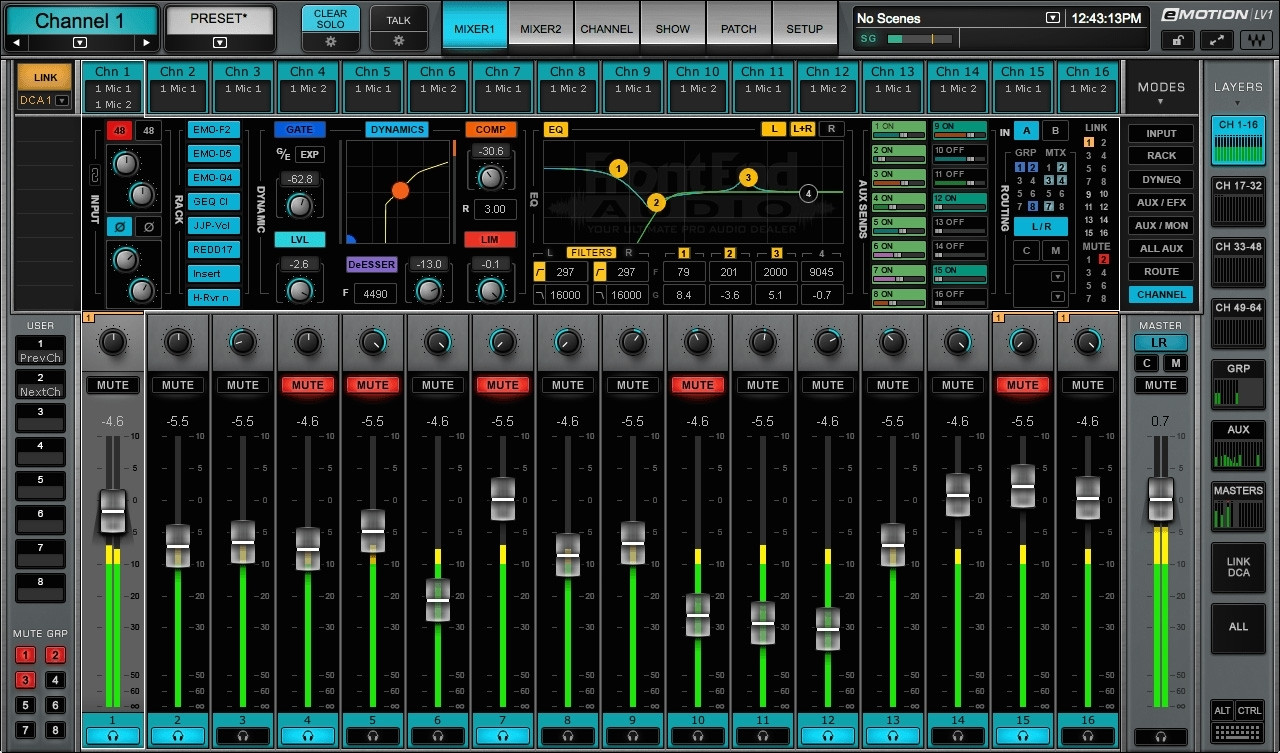The world of audio production has undergone significant transformations over the last few decades, influenced heavily by technological innovation. One of the most groundbreaking changes in live sound reinforcement is the advent of the digital mixer. This technological marvel has revolutionised the way sound engineers and musicians manage audio during live performances. In this article, we will explore the various ways in which digital mixers have changed the landscape of audio production, providing superior control, flexibility, and quality.
The Emergence of Digital Technology in Audio Production
Initially, analogue mixers were the standard in live sound applications, with their tangible faders and knobs offering a hands-on approach to mixing. However, the desire for more sophisticated features, memory recall, and automation led to the rise of digital mixers in the professional audio ecosystem. Unlike their analogue predecessors, digital mixers offered an extensive range of possibilities that had been previously unimaginable.
Enhanced Control and Customisation
One of the standout features of using a digital mixer is the heightened level of control it provides to sound engineers. Digital consoles allow for the creation of multiple, savable configurations. This means that settings perfected during a soundcheck or previous performance can be easily recalled, ensuring consistency and quality across different shows or scenes. Such precision is particularly beneficial in theatrical productions and touring contexts where audio needs might change from night to night or venue to venue.
Integrated Effects and Processing
Another significant advantage of the digital mixer is its inbuilt digital signal processors (DSPs). These processors deliver a myriad of effects and processing tools such as reverb, delay, compression, gating, and equalisation, all within the mixer itself. Eliminating the need for additional outboard gear not only reduces the equipment load but also streamlines the mixing process. Engineers can now tweak and apply complex effects chains with just a few touches or clicks.
The Impact of Connectivity and Compatibility
In a digital mixer’s ecosystem, connectivity is key. The integration with digital audio networks such as Dante or AES50 allows for the seamless transmission of multi-channel audio over a single, often standard, network cable. This simplifies the setup process and reduces cable clutter, all while maintaining high audio quality without the susceptibility to interference that analogue cables can have.
Adaptability to Various Live Sound Environments
Digital mixers have proven themselves to be exceptionally adaptable to various live sound environments. Whether it’s a small gig in a café or a large-scale concert in an arena, these mixers can be scaled to fit the needs of the venue. With the option of remote control via tablets and smartphones, engineers can move around the venue and make adjustments from any location, ensuring the best possible sound for the audience.
User-friendly Interfaces and Workflows
The evolution of user interfaces on digital mixers has been substantial, with a focus on user-friendly workflows that cater to both novices and seasoned professionals. Touchscreen displays, intuitive software, and customizable layouts make navigating complex audio tasks much simpler. These features help in reducing the learning curve for new users while providing experts with the advanced tools they require.
The Future of Live Sound with Digital Mixers
The digital mixer is not just a current trend, but a lasting shift in the audio production industry. Future developments hint at even more sophisticated digital mixing desks with features like automated mixing, AI-driven feedback suppression, and enhanced spatial audio capabilities. Such advancements promise to elevate the role of audio engineers, affording them more creative freedom and the ability to achieve superior sound quality.
Sustainability and Cost-Effectiveness Considerations
Asides from its technical benefits, the digital mixer also offers a sustainable advantage. With reduced need for physical materials (such as cables and outboard gear) and the ability to update software rather than replace hardware, digital mixers represent a more environmentally conscious and cost-effective solution in the long term.
The Centrality of Digital Mixers in Professional Audio
It is evident that the digital mixer has become central to professional audio setups, and its influence continues to grow. With the capacity to handle complex audio configurations, add more functionalities through firmware updates and seamlessly integrate into larger audio systems, these mixers are indisputably revolutionizing live sound.
In conclusion, the digital mixer revolution has been fundamental in advancing live sound reinforcement. This technological breakthrough has not only enhanced the quality of audio but also expanded the creative potential of engineers and artists alike. From vast connectivity options to integrated effects and the promise of ongoing evolution, digital mixers are shaping the present and future of audio production.
To truly master live sound, embracing the digital mixer is no longer an option; it’s a necessity. As we witness continued innovation in this field, sound engineers and audio enthusiasts can look forward to even more groundbreaking developments that will further elevate the art of live performance.
